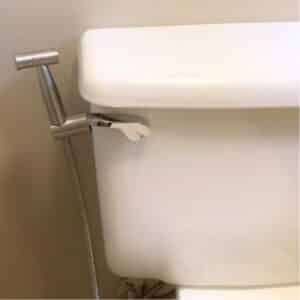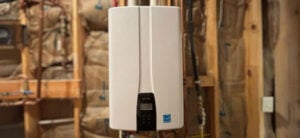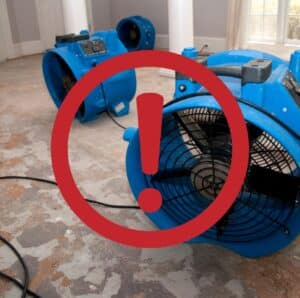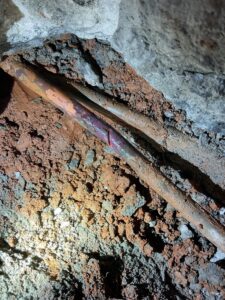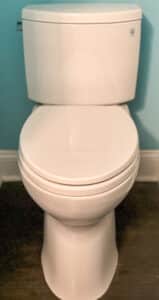The Lifecycle of a Plumbing System: A Comprehensive Guide

Photo by Daniel J. Schwarz on Unsplash
Your home depends on a well-oiled plumbing system. Regular plumbing system maintenance is necessary if you want all the components to function properly and last for a projected lifespan. So what is the lifespan of plumbing components? What are their common issues? Find out the answers to be ready for the potential repairs and replacements. This guide covers pipes, water heaters, faucets, and toilets, focusing on their lifecycles and maintenance needs.
1. Pipes

Pipes transport water to and from fixtures and appliances in your home. The material and quality of pipes determine their lifespan and performance. Choosing the appropriate type of pipes is important when installing or replacing plumbing components.
Types of Pipes:
- Copper Pipes: Known for their durability and longevity, copper pipes can last 50-70 years. They are resistant to corrosion and bacteria, making them ideal for water supply lines. Copper pipes are also relatively easy to install and repair.
- Pex Pipes: This type of pipe is the newest, most popular piping in today’s homes. With a long life and low cost, pex piping the the current standard for water piping in homes.
- Galvanized Steel Pipes: These pipes have a lifespan of 20-50 years. They were once a standard for home plumbing but are prone to corrosion and rust over time. Many older homes still have galvanized steel pipes, and it is often advisable to replace them with more modern materials.
- PVC Pipes: Polyvinyl chloride (PVC) pipes last 25-40 years. They are commonly used for drain, waste, and vent systems due to their resistance to corrosion and affordability. PVC pipes are lightweight and easy to handle, making them a popular choice for many plumbing applications.
- CPVC Pipes: Chlorinated polyvinyl chloride (CPVC) pipes are known for their enhanced durability and high-temperature resistance, making them ideal for hot and cold water distribution. They have a shorter lifespan because over time, CPVC can become brittle and prone to breaks and cracks. CPVC pipes are relatively easy to install and maintain, with smooth interior surfaces that help maintain water flow and reduce energy costs. Their flexibility and affordability make them a popular choice for both residential and commercial plumbing applications.
Common Issues:
- Corrosion: Over time, pipes made of metal, especially galvanized steel and copper, can corrode, leading to leaks and water contamination. Corrosion is often caused by the chemical reactions between the metal pipes and the water.
- Clogs: Debris, mineral deposits, and other materials can accumulate inside pipes, causing blockages and reducing water flow. Regular maintenance can help prevent these clogs.
- Leaks: Wear and tear, corrosion, and joint issues can lead to leaks, wasting water and causing damage. Leaks can occur at any point in the plumbing system and can lead to significant water damage if not addressed promptly.
Maintenance Tips:
- Regular Inspections: Check your pipes periodically for signs of corrosion, leaks, and damage. Early detection of potential issues can save you from costly repairs in the future.
- Water Softening: Install a water softener to reduce mineral buildup in pipes, prolonging their lifespan. Hard water can cause scale buildup inside pipes, leading to reduced water flow and increased pressure.
- Professional Cleaning: Have pipes professionally cleaned to remove buildup and prevent clogs. Regular cleaning helps maintain optimal water flow and pressure throughout your plumbing system.
Homeowners should schedule regular inspections and maintenance of pipes to prevent leaks and blockages. Early detection and repair of small issues avoid major repairs. Regular maintenance keeps pipes in good condition, maintaining the efficiency and reliability of the plumbing system.
2. Water Heaters

Water heaters provide hot water for bathing, cleaning, and cooking. The type and condition of your water heater impacts its efficiency and lifespan. Many homeowners do not realize that regular maintenance can significantly extend the life of their water heater. Proper care keeps the hot water supply consistent and prevents unexpected breakdowns and costly repairs. Traditional tank water heaters and modern tankless units have different maintenance needs and lifespans, which affect decisions about upkeep and replacement.
Types of Water Heaters:
- Traditional Tank Water Heaters: These units typically last 8-12 years. They store and heat a large volume of water, providing a steady supply when needed. Traditional water heaters are common in many homes but can be less energy-efficient than newer models.
- Tankless Water Heaters: With a lifespan of 20+ years, tankless water heaters heat water on demand, offering greater energy efficiency and unlimited hot water. These units are more compact and can be installed in smaller spaces, making them a popular choice for modern homes.
Common Water Heater Issues:
- Sediment Buildup: Over time, minerals in the water can settle at the bottom of the tank, reducing efficiency and causing damage. Sediment buildup can lead to overheating and increased energy consumption.
- Thermostat Failure: A faulty thermostat can lead to inconsistent water temperature and increased energy usage. Regularly checking and calibrating the thermostat can help maintain optimal performance.
- Leaks: Corrosion or faulty connections can cause water to leak from the tank. Leaks can occur in the tank itself or in the plumbing connections, leading to water damage and reduced efficiency.
Water Heater Maintenance Tips:
- Regular Flushing: Flush the tank annually to remove sediment buildup and maintain efficiency. Flushing helps prevent overheating and prolongs the life of the water heater.
- Inspect Anode Rod: Check and replace the anode rod every few years to prevent corrosion inside the tank. The anode rod attracts corrosive elements, protecting the tank from rust.
- Check Temperature Settings: Ensure the thermostat is set to a safe and efficient temperature, typically around 120°F. Setting the temperature too high can increase energy consumption and the risk of scalding.
Schedule annual inspections. Flush the tank to remove sediment buildup. Replace the anode rod to prevent corrosion. These steps keep your water heater running efficiently, providing consistent hot water and lowering energy bills. Follow your plumber’s recommendations to save money and avoid unexpected breakdowns.
3. Faucets

Faucets control the flow of water in sinks, bathtubs, and showers. They offer functionality and add to your home’s aesthetic appeal. Select the right faucets and maintain them properly to improve the look and efficiency of your plumbing system.
Types of Faucets:
- Kitchen Faucets: Typically last 5-15 years. They are designed for frequent use and often come with features like pull-out sprayers and touchless activation. Modern kitchen faucets can improve convenience and water efficiency.
- Bathroom Faucets: Can last 7-15 years. These faucets are available in various styles and finishes to complement bathroom decor. High-quality bathroom faucets can add a touch of elegance to your home.
Common Faucet Issues:
- Leaking: Worn-out washers, gaskets, or seals can cause faucets to leak, wasting water and increasing utility bills. Leaks can often be fixed with simple repairs, such as replacing the affected components.
- Low Water Pressure: Mineral buildup in the aerators can reduce water flow. Cleaning or replacing the aerators can restore proper water pressure.
- Dripping: Continuous dripping is usually a sign of internal wear and can lead to higher water bills. Dripping faucets can often be repaired by replacing worn-out parts.
Faucet Maintenance Tips:
- Replace Washers and Gaskets: Regularly replace these small components to prevent leaks. Keeping spare parts on hand can help you address issues quickly.
- Clean Aerators: Remove and clean aerators periodically to maintain water pressure. Soaking aerators in vinegar can help dissolve mineral buildup.
- Handle with Care: Avoid excessive force on handles to extend their lifespan. Gentle use can prevent damage to the internal components of the faucet.
Regularly check and maintain your faucets. Clean the aerators and swap out any worn parts. This helps stop those annoying drips, boosts water efficiency, and keeps your faucets looking sharp. Stick to these tips, and you’ll save money and keep your plumbing in top shape.
4. Toilets

Toilets get a lot of use and play a key role in your home’s plumbing lifecycle. Modern low-flow toilets save water without losing any flush power. When you upgrade to one of these and maintain it well, you can lower your water bills and extend the life of your plumbing system.
Types of Toilets:
- Toilet Tanks and Bowls: The ceramic components of toilets can last 15+ years if well maintained. High-quality materials and proper installation can ensure long-lasting performance.
- Internal Components: Parts like the flapper, fill valve, and flush valve typically last 5+ years and may need periodic replacement. Regularly inspecting and replacing these parts can prevent common issues.
Common Toilet Issues:
- Running Toilet: Often caused by a faulty flapper or fill valve, leading to continuous water flow and waste. A running toilet can waste a significant amount of water if not addressed promptly.
- Leaks: Leaks from the base or tank can be due to worn-out seals or connections. Leaks can cause water damage to the surrounding area and increase water bills.
- Clogs: Improper use or buildup can cause blockages, making the toilet unusable. Clogs can often be cleared with a plunger or drain snake, but severe blockages may require professional assistance.
Toilet Maintenance Tips:
- Check for Leaks: Regularly inspect the base and tank for signs of leakage. Addressing leaks early can prevent water damage and reduce water waste.
- Replace Flapper and Fill Valve: These components wear out over time and should be replaced periodically. High-quality replacement parts can improve the performance and efficiency of your toilet.
- Use Properly: Avoid flushing non-flushable items to prevent clogs. Educate household members about what can and cannot be flushed to maintain a clog-free toilet.
Regularly check your toilet for leaks and replace worn-out parts. Fixing issues early keeps your toilet running efficiently and saves water. A little attention goes a long way in avoiding costly repairs and maintaining a reliable plumbing system.
Make Plumbing System Maintenance a Priority
Regular plumbing system maintenance and timely repairs make a huge difference in the efficiency and proper function of your home. With Aaron Services: Plumbing, Heating, Cooling, you get experts who understand every aspect of your plumbing components.
Our team helps you plan and budget for future repairs and replacements, reducing stress. With professional inspections, repairs, and maintenance, we keep your plumbing system in top shape for years.
Ready to give your plumbing the care it needs? Contact us today. Let’s keep your home safe, comfortable, and efficient together.


